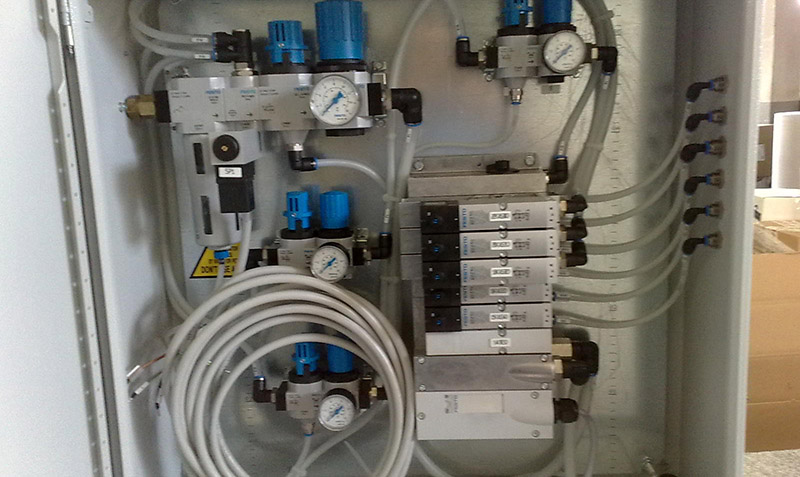Valve body selection for non-standard pneumatic cabinets
2020/3/6
![]()
![]()
Hand wheel or automatic process valve? The global trend is clearly towards automation. This is because automation can save energy and water, especially for flushing water, and improve operational reliability. This is illustrated through an example of pneumatic automation for fixed bed filters in a water plant. A ready-to-use control cabinet with a control panel is a key function here.
Open or closed fixed bed filters are an important component of water treatment in waterworks or purification plants. They remove turbidity, non biodegradable components, and soften, deacidify, or harden water.
Flexible automation
Pneumatic provides greater functionality in process valve control. They can be used to forcibly control safety related functions based on relevant operating conditions. If there is no emergency generator available, this particularly involves the behavior of process valves during power outages. Specifically, this refers to the initial position of the process valve when the system is not running or started, as well as the safe position of the process valve in the event of a power outage: forced close, open, or pause.
The number of fixed bed filters can range from two filters in small local water plants to 48 or more filters in water plants in major cities. Therefore, the concept of automation must be decentralized and flexible, and must combine pneumatic and electrical. Pneumatic valve islands are particularly suitable for this. It establishes connections between pneumatic process valves and limit switches, measuring equipment, and controllers or process control levels.
Valve island in control cabinet with integrated PLC
Link-Mint's control cabinet is a forward-looking technological development that allows factory operators to centrally configure all parameters to control the process valves of fixed bed filters. The main difference from traditional solutions lies in the valve island, rather than a single valve directly on the driver; Integrated pneumatic manual operation level; By dividing this function into three elements, the locator was removed.
Each fixed bed filter is assigned a control cabinet. The main components of the control cabinet are the touch screen and PLC used for system operation. The link to the coordination level is connected to higher-level PLCs and process visualization through Ethernet. The PLC in the control cabinet controls the process valve, and the superior PLC coordinates the backwashing of each fixed bed filter.
Positioner function
The manual operation level can also operate the system from the control cabinet in the event of a malfunction or no power supply. The control cabinet is a powerful and flexible solution for controlling valves. It can be operated even without power supply. The regulator parameters can be centrally configured in the control cabinet. The CPX/MPA valve island is the key component core of the control cabinet.
The locator function is divided into three parts: a box with a 4-20 mA analog output provides feedback on the position of the process valve, and a 5/3 direction solenoid valve on the valve island activates the driver and regulator shift software to the PLC.
Easy to use
Therefore, compared to using intelligent locators, compressed air quality requirements are lower. The high flow rate of the solenoid valve allows for rapid movement and safe operation, even with larger actuators. If there is no power supply, the process valve can be manually configured. However, the biggest advantage in terms of processing is that the system operator does not need to directly

